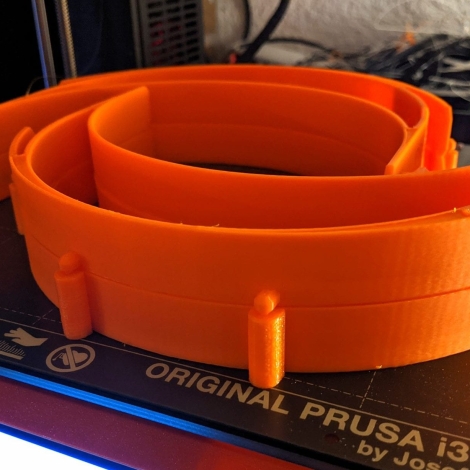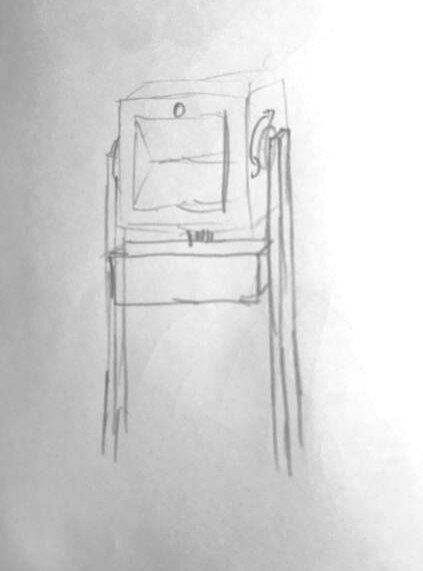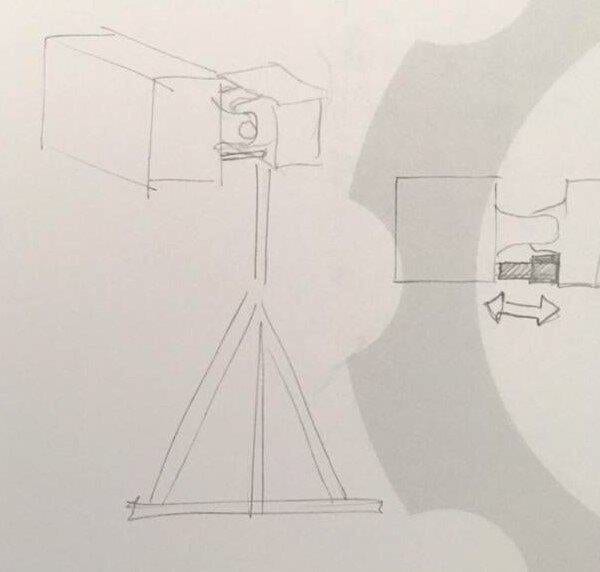Let’s get straight to the point.
Anybody can help find solutions to problems; and COVID-19 is a problem. You don’t need to be an expert to engineer solutions that help relieve the difficulties caused by this pandemic. Even more specifically, you can choose to volunteer with open source communities like Helpful Engineering, a nonprofit incubator organization, and MAKE.co, an online community of makers sharing tips and ideas on how to help from home. That is what I did.
The truth is, I am far from being an expert in anything. In fact, my insights and suggestions to the Helpful Engineering open source community will most likely not be implemented on any final product. Yet the opportunity to contribute and be part of these online communities has already taught me so much about how I should participate in future projects.
Here are two core concepts I have learned so far:
1. A rough sketch is better than no sketch at all
(That’s right! Go check out Chris Mattson’s article, Learn to Sketch).
I may lack the vocabulary of engineers with years of experience (I’m intimidated by that), but drawings go beyond words. By sketching ideas, and proposing them to the team, my voice has been heard, even when I lack the words. These sketches have led to other discussions and new understanding. For example, I now know that servo motors are way cheaper than linear actuators, and how to make equipment water-proof if needed. Yes, learning this led to a more complicated design relative to my initial idea. But the design is better, and that’s the point.
2. Jump into discussions, speak up, share your ideas.
We can often get caught in the mentality that our ideas are not good enough. Remember, ideas are cheap. If you share your idea, and it turns out to not be viable for whatever reason (cost, design, time spent designing it, resources…), know that by sharing it, it can spark discussions on other important aspects of the problem. Your expertise or knowledge in other fields can definitely help evolve other’s ideas too. Besides, your own knowledge will expand when you engage in this way. I have already learned about different plastics, disinfecting regulations, border regulations, filtration materials and just recently, how different placement of gears can help with stress in lifting mechanisms and help lower production costs.
In my experience
The two concepts I shared above have been a big part of my experience. Let me share just one small example. The volunteers for Helpful Engineering’s “Temperature Detection” project are working on a fever detection device that costs less than $60 and can be placed at major public areas to prevent the spread of COVID-19 through early symptom detection. While working with Brandon Zhang, one of the mechanical engineers on the team, I asked him to send me a rough sketch on the design so I could get oriented to the project and better understand how the body of the device pivots around a center pin; this is what he sent me:
Though it’s rough, the sketch quickly got me thinking more deeply about the project. I wondered if maybe moving the pivot away from the center and replacing the servo motor with a linear actuator would reduce stress on the motor. So, I made a sketch:
The discussion resulting from my sketch focused on the cost differences between linear actuators and servo motors. This led then David Bodgal, another member of the group, to post a quick web search render showing a different setup of gears than what I had envisioned, which most certainly reduces stress placed on the motor and possibly its attachments. This design used a stepper motor instead of a servo or a linear actuator.
Each person on this team had meaningful, yet different, ways of contributing to the fever detection device.
What is so amazing about this opportunity is that this is likely the first time in history that the entire world is fighting the same problem. You are needed! And so am I. Don’t let your self-perceived lack of expertise, TV, video games, or whatever else keep us from the global engagement the world needs right now. Not only will the fight against COVID-19 get the engineering brainpower it deserved, but as individuals, we will grow in skill and confidence, and in knowing that our ideas (however small and tiny they may be) were part of the eventual solution.
There are ways to help
How big, really, is this problem and what can I do to help?
Here are just a few of the many things that need to be done: Ideating alternate solutions for countries that don’t have access to PETG sheeting rolls to make protective face covers. Or helping families of 6 living in a one-room apartment quarantine members that are infected. Gathering and organizing ventilator user manuals, and various documents, like 3D printed PPE (Personal Protection Equipment) instructions need to be translated. Even gathering existing solutions, so as to not reinvent the wheel, and have them be easily accessible to third world countries. Fundraising or creating awareness for specific projects. Updating spreadsheets monitoring hospital needs, but being cautious as to not overwhelm hospitals with unnecessary calls (try calling local police stations first, checking the hospital’s website or working alongside existing organizations). Even tutoring kids online has a big impact right now.
Here are five links that will help you get started NOW:
- Helpful Engineering: “A 3,400 strong volunteer-run nonprofit incubator organization, with engineers, scientists, and doctors around the world dedicated to helping the world address the COVID-19 pandemic.” Volunteer and/or join the Slack workspace at Helpful Engineering.
- Make Community: An community in charge of 240+ Maker Faire around the world has dedicated a portion of their site with resources for makers everywhere, “Plan C: COVID-19 Response.”
- I Fix It: This online community has also teamed up to gather and sort through hospital equipment user guides to facilitate repairs of broken equipment like ventilators.
- Local communities are likely to have opportunities close to home: For example, in our town, the police station asked citizens with 3D printers to help print the reusable masks described at makethemasks.com. Law enforcement workers and firemen were unable to acquire masks as they were all allocated for health care professionals.
- Help With COVID: If you are looking for other ways to serve, Help With COVID has hundreds of projects you can work on remotely. From apps to fundraisers, instructional videos or even thank you letters to doctors, you can find a place for your skills at Help with COVID.
About the Author
Danni Figueroa is the Editor of the BYU Design Review (2019-2020), a passionate creator, and an engineering student at BYU.
A different version of this article was published on the website of the BYU Design Review. See the original here.



